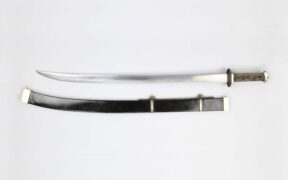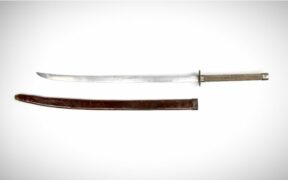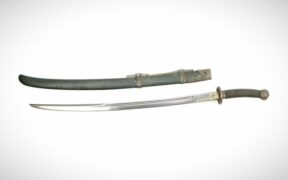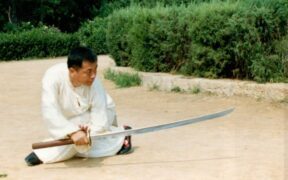Our content features commercial links to our products, committed to transparent, unbiased, and informed editorial recommendations. Learn More
Decoding Nandao Sword: Characteristics and Use
NO AI USED This Article has been written and edited by our team with no help of the AI
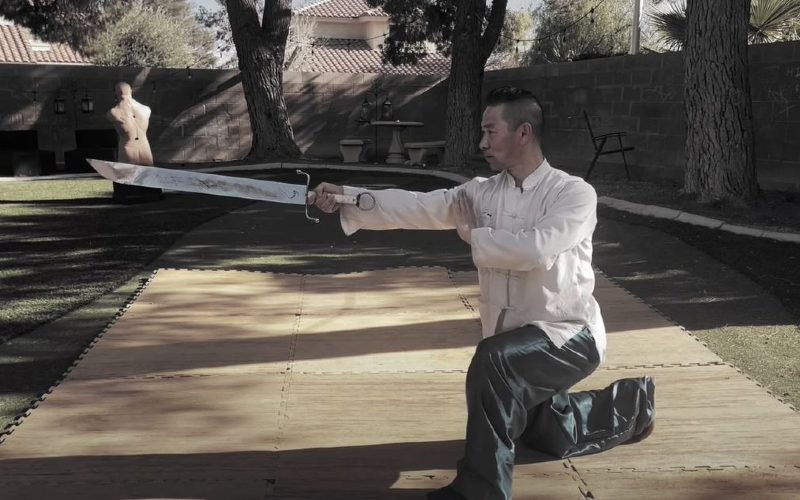
Nandao is a Chinese sword mostly used in modern forms and exercises of Chinese Wushu. It is a more common southern version of the northern broadsword, or Beidao.
In this article, we will look at the characteristics of the Nandao. Then we will explain how it is generally used and how to use it best. Next, we will show where to find the best online swords and review the sword’s history. Finally, we will explain how it differs from its northern counterpart.
Characteristics of the Nandao Sword
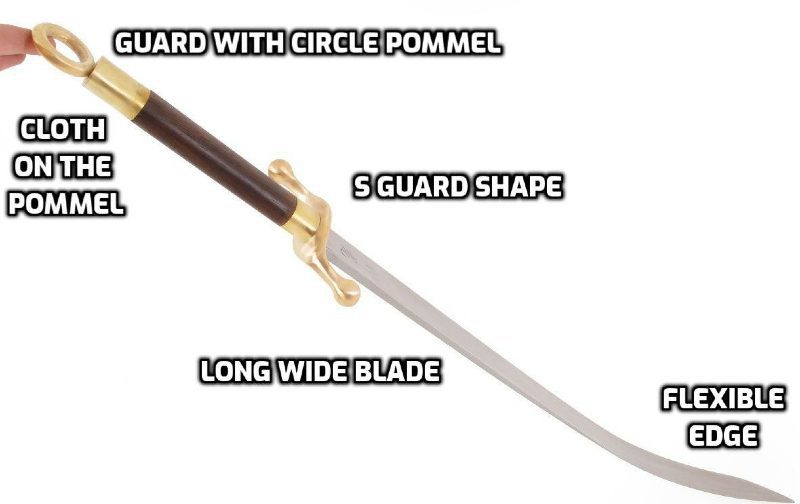
The most visible characteristic of the Nandao sword is that its length resembles the Chinese butterfly sword and its very interesting ‘S’ guard shape.
Blade
The total length of the Nandao sword is around 25 to 29 inches / 65 to 75 cm.
The blade of the Nandao sword is single-edged, meaning that only one side can be used for slashing. The blade starts from the guard and ends at the edge. It is tighter at the neck of the sword and broadens toward the edge.
The blade can be made of different materials depending on its usage. For example, if it is used for striking purposes, it will be made from iron or steel and sharpened to be battle ready. But if it is only for shows or Wushu, the blade will be flexible and can be made from alloy steel or sometimes even plastic.
Guard – Sword Catcher
The guard of the Nandao sword is distinct. It has an ‘S’ shape guard, allowing the user to move it more freely and perform many flashy moves for entertainment purposes.
Other than that, it is also called the ‘Sword Catcher’ guard, meaning that it can be used to catch the opponent’s sword in an attack.
Handle
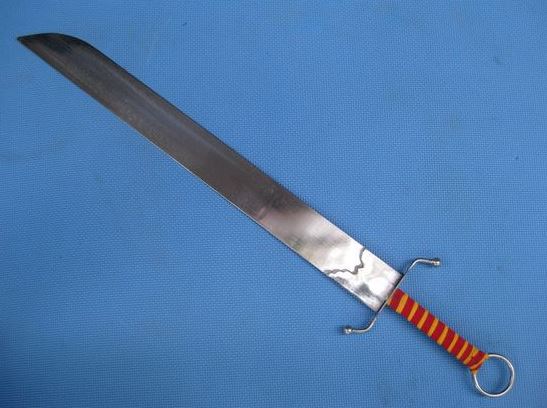
The standard handle length of the Nandao is 5.9 inches / 15 cm.
A Nandao sword has a polished wooden handle decorated with numerous fittings to make it presentable and unique. But for it to be functional, the handle will be wrapped.
The Nandao sword is used very fast and can be thrown left and right when doing Wushu. That is why a wrapped handle is most commonly used. The wrapped handle offers a much better grip than the regular polished wood handle.
Pommel – Cloth or Sink
The pommel of the Nandao sword usually has a circular shape or hole that is opened up. Usually, this is for the user to tie a cloth called a ‘sink.’ The sink helps to enrich the performance acts as the sword can be thrown around and moved more freely.
The cloth or sink was used in a battle to distract the opponent and allow for a possible deadly strike. However, sometimes it is just used for appearance and to represent authority.
Scabbard
The Nandao scabbard is typically made of wood or leather. This can vary depending on the type of sword. If you have a decorative Nandao, the best scabbard would be polished wood, whereas if it is for training, the best would be leather.
Size and Length
The overall length of the Nandao sword can vary but is usually from 29.5 to 37 inches / 75 to 95 cm.
It is not a very big straight sword because it is meant to be the perfect performance tool and used for welcoming newcomers to Chinese martial arts training. The sword is just big enough for use as either a two-handed or a one-handed sword.
Weight
It is difficult to describe the proper weight of the Nandao because there are different types of Nandao swords.
Nandao swords made from steel will be much heavier than the ones made from other materials. The usual weight for battle-ready steel/iron swords is around 3 pounds / 1.4 kg. In comparison, the flexible ones can weigh approximately 1.1 pounds / 0.5 kg.
Curvature
The Nandao sword has a slight curvature. The handle does not curve but is fairly straight. The blade starts curving towards the edge point, resulting in a curved blade.
Uses for the Nandao Sword
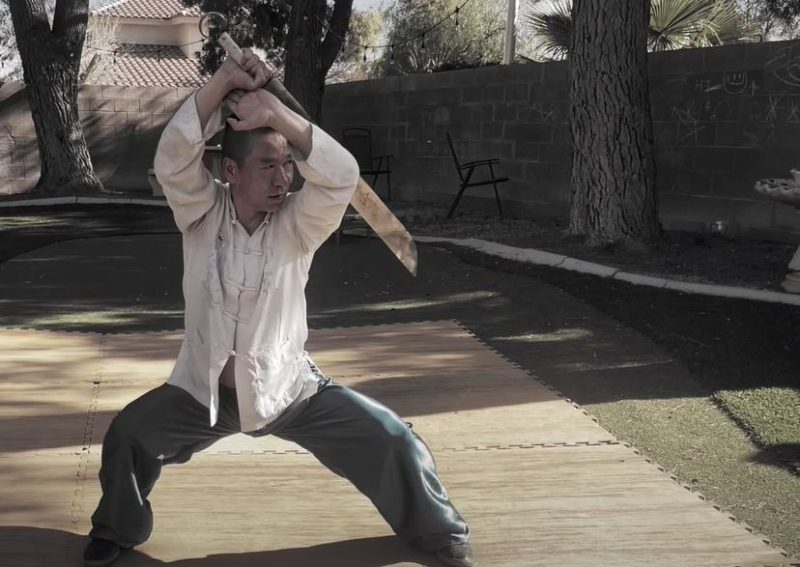
The Nandao sword can be used with one or both hands. It is a broad and heavy hook sword because of its wide blade and S guard shape. It is best used for slashing and can be used for performance purposes.
Martial Arts & Wushu
The Nandao sword is largely used in modern Chinese Wushu forms and exercises. It is one of the most common swords in Chinese martial arts and is found in Nanquan and even in Changquan (Chinese Kung Fu from the north and south), Tai Chi, Karate, and so on. However, it is mostly used in Wushu Taolu art.
The Taolu has a lot of different routines that fall into four main categories: short weapons, bare hands, long weapons, and Dui Lian (choreographed fights). For practicing with shorter weapons, the Nandao is one of the swords used in standard sets or with different levels of difficulty.
Watching a well-trained Shaolin with the Nandao can leave you speechless.
Performance
The Chinese word “wushu” in Chinese means “methods of war” or “fighting methods” . It is the Chinese equivalent of Japanese Bujutsu. But in the last 50 years, the mainland Chinese government has used the word “wushu” to describe performance art that uses the moves from real martial arts. As the goal of all performance arts is to entertain the audience, the moves used by the Nandao are very flashy.
For this reason, some don’t consider Wushu a real martial art and think that the Nandao sword is primarily used for entertaining purposes.
Is it a good Beginner Sword?
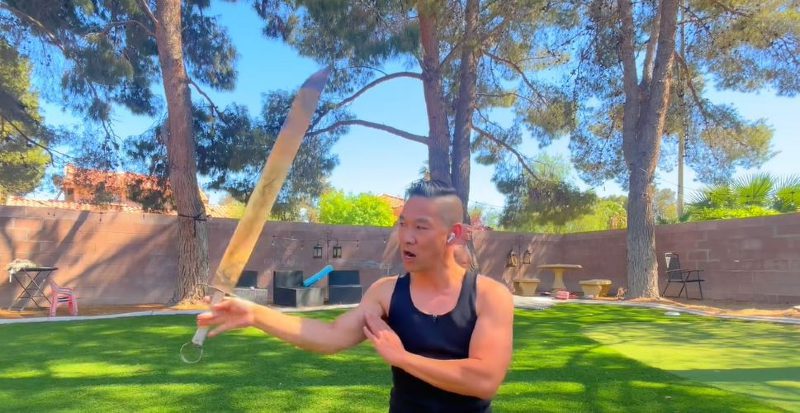
The Nandao is an ideal Chinese sword for everyone, from beginners to experts, and can be used daily for training or shows.
It is often used and even given to small children as their first sword in many Chinese martial arts schools. When held in the left hand with the hand guard in the palm, the tip of the Nandao shouldn’t be lower than the athlete’s jaw joint.
The blade of the Nandao is usually made of spring steel with a chrome finish. It should be very light, flexible, and strong for use. It should also be light to enable you to do all sorts of attacks while jumping, ducking, rolling, etc.
It is the best type of Chinese broadsword to begin training, so we highly recommend it.
Best Nandao Available Online
When looking for a Nandao sword, the description will mention it’s purpose – if it is battle-ready and can be used for slashing, or if it is only a training Wushu and flexible sword.
Best Overall – Carbon Steel Nandao Sword
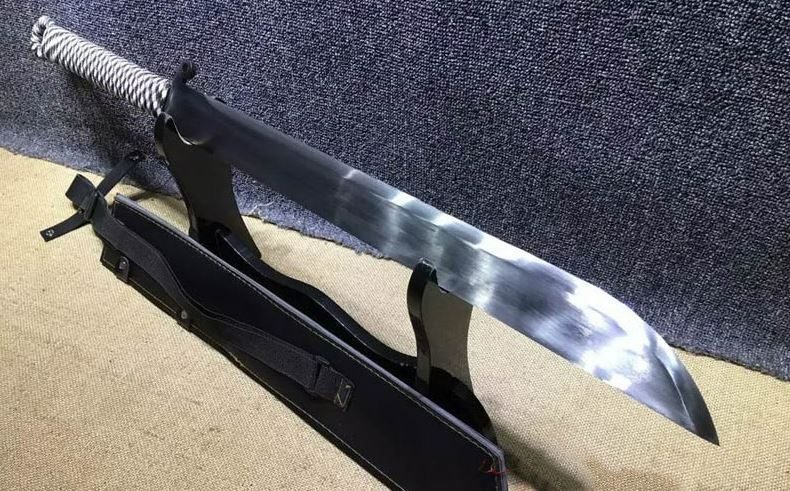
This Nandao blade is made from high-quality 1060 stainless steel, which makes it strong, durable, sharp, and fully functional. The blade of this broad Nandao sword is of high quality, and its durability can be felt on its surface.
The blade is also perfectly sharpened, so it is fully functional and ready to be used for practice, drills, or cutting targets. The handle is full tang and made of beautiful black and white rayon silk wrapped around the blade.
Its total length is 30 inches / 77 cm, weighing around 4.4 lbs / 2 kg.
Best for Training – Tiger Clar Nandao Sword
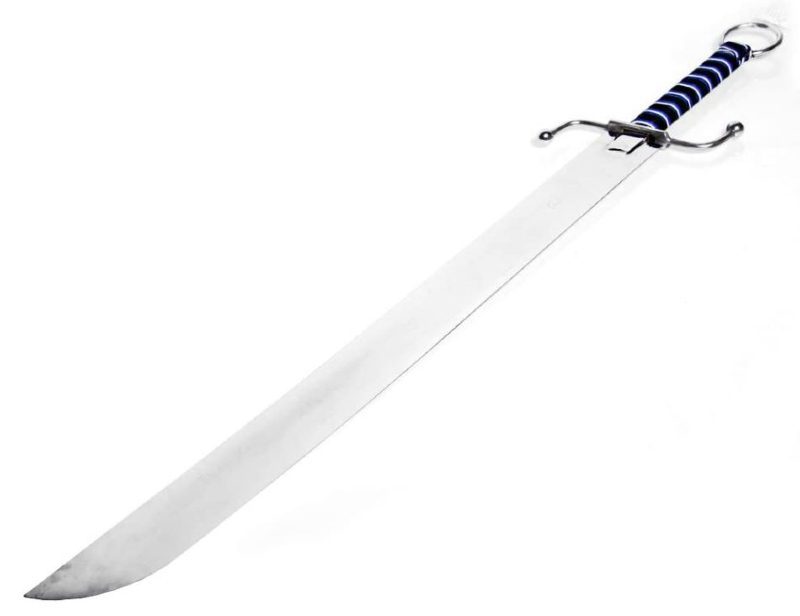
This sword has a quick, light steel blade for the newest Wushu requirement in China. Southern broadswords have a straight blade with an s-shaped guard that make them stand out. It is a training Nandao with a distinct circle on the back of the pommel.
This style is best for strong chops used in southern-style kung fu. Keep in mind that this weapon is only for practice and show, not for real fighting. This means that it is a flexible sword that can bend when desired.
It has an overall length of 30 inches / 78 cm.
History of the Nandao Sword
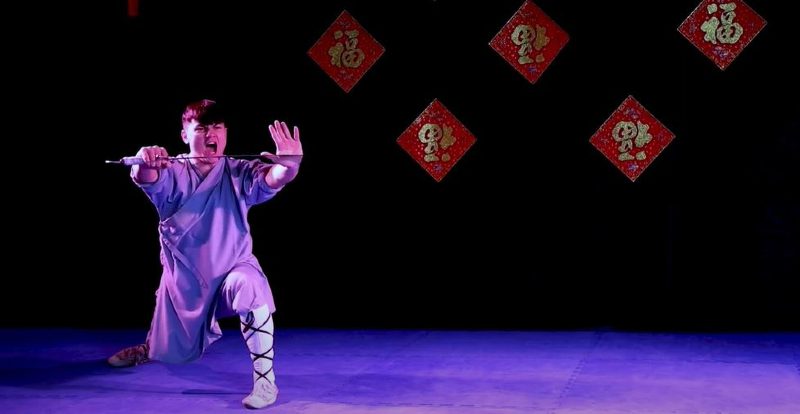
Nandao (南刀) directly translates ‘South Sword,’ which means that it comes from the southern parts of China.
There are no historical records or references for the word “Nandao,” and only a few parts have been found that resemble it. Because of this, the main form of the weapon could never have been widely used, like the Yanmaodao, Niuweidao, Butterfly swords, or Liuyedao.
Despite the fact that the Nandao cannot be found in Chinese archives or historical texts, some would argue that this sword was used in 14th-century China. This was during the same time that the European broadsword was used.
The Nandao sword would have served as a one- or two-handed weapon and was most likely used in duels or owned by the nobility.
Nandao Vs. Beidao

The Nandao is a modern type of training sword that comes from the southern parts of China. Beidao is also a modern type of training sword but comes from the northern part of China.
The primary distinction and differences between the Nandao and the Beidao are:
- Origins – North and south China
- Weight – The Nandao is bigger and much heavier than the Beidao
- Usage – The Nandao sword is typically wielded with two hands due to its larger weight and size
- Size – The Nandao is a much bigger type of sword that resembles the European-style broadsword
- Guard – The Nandao has an additional large metal crossguard that can deflect blows and hook an opponent’s weapon.
- Shape – Despite having a single edge, the Nandao does not have a curved shape like the northern broadsword.
Both Chinese swords have the same purpose but are very different in how they can be used in a battle or training. Both of them are found in Chinese championships.
Conclusion
The Nandao sword is the most interesting-looking Chinese broadsword and possibly the best training weapon if you prefer Chinese swords. It is a weapon that can be found in almost all Chinese martial arts.
